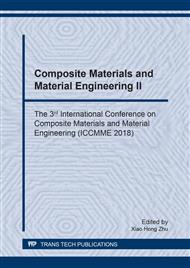p.162
p.168
p.177
p.183
p.188
p.194
p.203
p.209
p.215
Effects of Antimony and Indium Addition on Wettability and Interfacial Reaction of Sn-3.0Ag-0.5Cu Lead Free Solder on Copper Substrate
Abstract:
The effects of antimony and indium addition on wettability and interfacial reaction of Sn-3.0Ag-0.5Cu lead free solder on copper substrate were investigated. The experimental results showed the melting point of solder alloy containing 0.5 wt.% In and 0.5 wt.% Sb were slightly increased about 3.66°C. The pasty range of solder alloys were increased about 6°C while the undercooling of solder alloys were decreased. The microstructures of solder alloy were contained of In and Sb consists of Ag3Sn, Cu6(Sn,In)5, SnIn, Ag3(Sn,In) and SnSb intermetallic compounds (IMCs) dispersed on Sn-rich phase. The wettability of solder alloys were improved by increasing soldering times. In addition, the thickness of intermetallic compounds (Cu6Sn5) were obviously increased with increasing soldering times.
Info:
Periodical:
Pages:
188-193
Citation:
Online since:
August 2018
Price:
Сopyright:
© 2018 Trans Tech Publications Ltd. All Rights Reserved
Share:
Citation:


